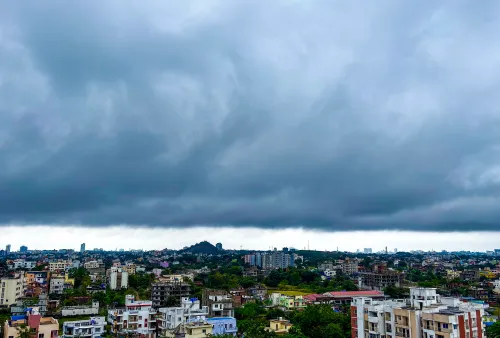Are Amoebae in Mumbai Creek Harbouring Bacteria with High AMR Risk?

Synopsis
Key Takeaways
- Amoebae in Vashi Creek possess bacteria with elevated antimicrobial resistance.
- Nearly half of the bacteria showed resistance to multiple antibiotics.
- These organisms could serve as indicators for environmental AMR monitoring.
- The findings align with the WHO’s One Health strategy.
- Current surveillance methods may overlook these hidden reservoirs.
New Delhi, Nov 24 (NationPress) Research has revealed that free-living amoebae in Vashi Creek, a tidal estuary located in Mumbai, are hosting bacteria exhibiting significantly elevated levels of antimicrobial resistance (AMR). This finding is part of a global study involving researchers from the prestigious Indian Institute of Technology (IIT) Bombay.
The examination, led by scientists at the University of Strathclyde in Scotland, indicates that these amoebae are functioning as a ‘Trojan horse’, harboring and safeguarding multidrug-resistant bacteria.
Alarmingly, nearly half of the bacteria within the amoebae displayed resistance to four or more antibiotics, with 22% of samples showing resistance to six or more. In stark contrast, only 0.6% of bacteria from sediment samples exhibited similar resistance levels.
Although typically regarded as predators of bacteria, amoebae could serve as “sentinel indicators” for AMR, providing opportunities for early detection of emerging resistance issues in the environment, as noted by the global research team in their publication in the journal Environmental Microbiology.
This research aligns with the World Health Organization’s (WHO) One Health initiative, which aims to create a sustainable balance among human, animal, and ecosystem health.
Set against the backdrop of a significant global health crisis, bacterial AMR was linked to approximately 1.27 million deaths in 2019 alone, contributing to nearly five million deaths in total.
“Amoebae thrive in diverse environments and can act as vectors, moving clinically relevant bacteria from their habitats to high-risk areas like hospitals or water treatment plants without detection. They essentially function as a microbial Trojan Horse, providing bacteria a secure environment to survive, adapt, and fortify their resistance,” stated lead author Dr. Ronnie Mooney from Strathclyde’s Department of Civil and Environmental Engineering.
“This research raises critical concerns regarding how these concealed reservoirs are missed by current surveillance systems. If amoebae are indeed harboring highly resistant bacteria, traditional monitoring methods may be failing to capture the true extent or distribution of antimicrobial resistance in the environment,” Dr. Mooney emphasized.
The research team hopes that their findings will assist environmental agencies, industries, and government entities in enhancing the monitoring of antimicrobial resistance in both natural and constructed environments.









